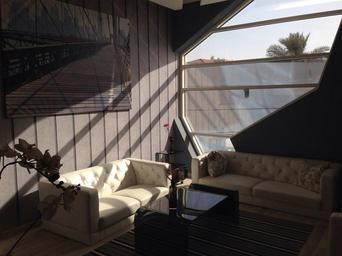Introduction
Art has the extraordinary ability to transform spaces, evoke emotions, and express individuality. In the realm of interior design, large canvas art holds a special place. It can serve as a focal point, an expression of self, or simply a beautiful addition to your home decor. But how do you effectively use large canvases to enhance your living space? This comprehensive guide delves into the intricacies of hanging a large canvas and explores impactful art http://collectivethoughts613.raidersfanteamshop.com/a-study-in-aesthetics-how-color-influences-our-living-spaces styles like aesthetic self-portrait photography and contemplative photography.
Hanging a Large Canvas: Elevating Your Space with Impactful Art
When it comes to home decor, large canvases can elevate any environment. Their grand scale allows for striking visual impact that smaller pieces simply cannot achieve. Whether it’s an abstract self-portrait photography that speaks volumes about your personality or rare home interior pictures showcasing serene landscapes, these pieces are not just aesthetic; they tell stories.

Why Choose Large Canvas Art?
Large canvas art provides several advantages:
Visual Impact: A big piece naturally draws attention. Focal Point Creation: It can help define the mood of a room. Space Optimization: Large artworks can fill empty walls beautifully.Finding the Right Piece
Art Photography vs. Traditional Painting
While traditional paintings are timeless, art photography has been gaining traction for its contemporary appeal. Aesthetic colorful portrait photography offers vibrant hues and modern themes that resonate well in today’s homes.
What Styles Work Best?
- Contemplative Photography: This style invites viewers into reflective moments. Abstract Self Portrait Photography: Perfect for those looking to explore their identity. Faceless Self Portrait Ideas: Adds mystery while still being personal.
The Emotional Connection with Art
Art is inherently personal; it reflects emotion and thought. Aesthetic photos wall filled with images that resonate with you will create an environment that feels uniquely yours.
Understanding Contemplative Photography
What is Contemplative Photography?
Contemplative photography encourages the viewer to engage deeply with what they see. Rather than capturing mere images, it seeks to evoke feelings and thoughts—an ideal style for anyone wanting their home decor to inspire reflection.

How to Incorporate It into Your Space
- Select Pieces That Resonate: Choose contemplative photos that speak to you personally. Create Dialogue: Use these pieces as conversation starters during gatherings.
Making An Aesthetic Statement With Large Canvases
Aesthetic Self Portrait Photography
Self-expression through art can be incredibly liberating. By incorporating aesthetic self portrait photography into your decor, you showcase not just your taste but who you are at your core.
Aesthetic Colorful Pictures as Decor Elements
Color plays an essential role in setting the mood of a room. Bright colors can energize spaces, while muted tones may bring tranquility.
How to Hang a Large Canvas Correctly
Understanding Wall Space Dimensions
Before hanging any artwork, it's crucial to consider the dimensions of your wall space:
Measure the area where you want to hang your canvas. Decide on the height—typically 57-60 inches from the floor is standard eye level.Choosing the Right Tools for Hanging
You’ll need:
- Hanging hardware (D-rings or sawtooth hangers) Level Stud finder
Step-by-Step Guide to Hanging Your Canvas
Mark where you want the top of your canvas. Depending on weight, choose either nails or screws for support. Use a level after placing your canvas on hooks/nails. Step back and make adjustments if necessary.Creating A Visual Harmony in Your Space
Color Coordination is Key
To ensure visual cohesion:
- Consider existing color palettes in your room. Match frames or colors in your canvas artwork with surrounding decor items like throw pillows or rugs.
Arranging Multiple Canvases
If you're using multiple pieces:
Lay them out on the floor first for trial arrangements. Maintain equal spacing between them for balance. Use similar framing styles for unity.FAQs About Hanging Large Canvases
1. What type of wall is best for hanging large canvases?
It's best to hang large canvases on sturdy walls like drywall or over studs for maximum support.

2. How high should I hang my canvas?
Generally, aim for 57–60 inches from the ground as this aligns with average eye level.
3. Can I use command strips instead of nails?
Command strips may work for lighter canvases but are generally less reliable than nails or screws for larger pieces.
4. Should I consider lighting when hanging my artwork?
Absolutely! Proper lighting can enhance colors and textures in your artwork significantly.
5. What if my artwork is too heavy?
For heavier artworks, ensure you're using appropriate hardware designed specifically for weight-bearing applications such as wall anchors or toggle bolts.
6. How do I create balance if my canvas is asymmetrical?
Consider adding complementary pieces nearby—like smaller framed artworks—to create balance within visual weight distribution across the wall space.
Conclusion
Hanging large canvases is more than just a decorating choice; it's an opportunity to infuse personality and emotion into your living spaces through impactful art forms like aesthetic self portrait photography and contemplative photos that encourage reflection and connection with viewers. By understanding how to select, arrange, and display these pieces thoughtfully, you elevate not only your interiors but also invite dialogue about identity, experience, and aesthetics into everyday life.
In summary, remember that art should resonate with you personally—after all, it's not just about filling wall space; it's about creating environments that reflect who we are at our very cores.